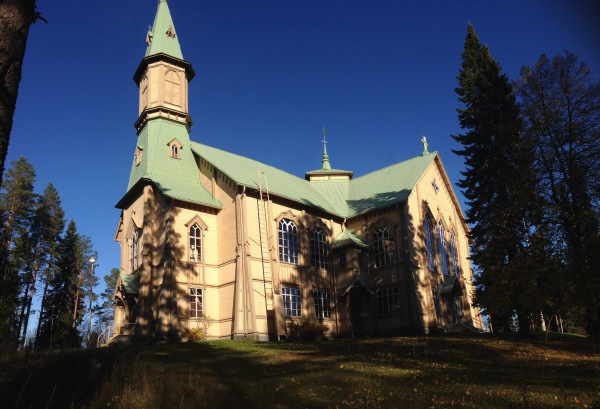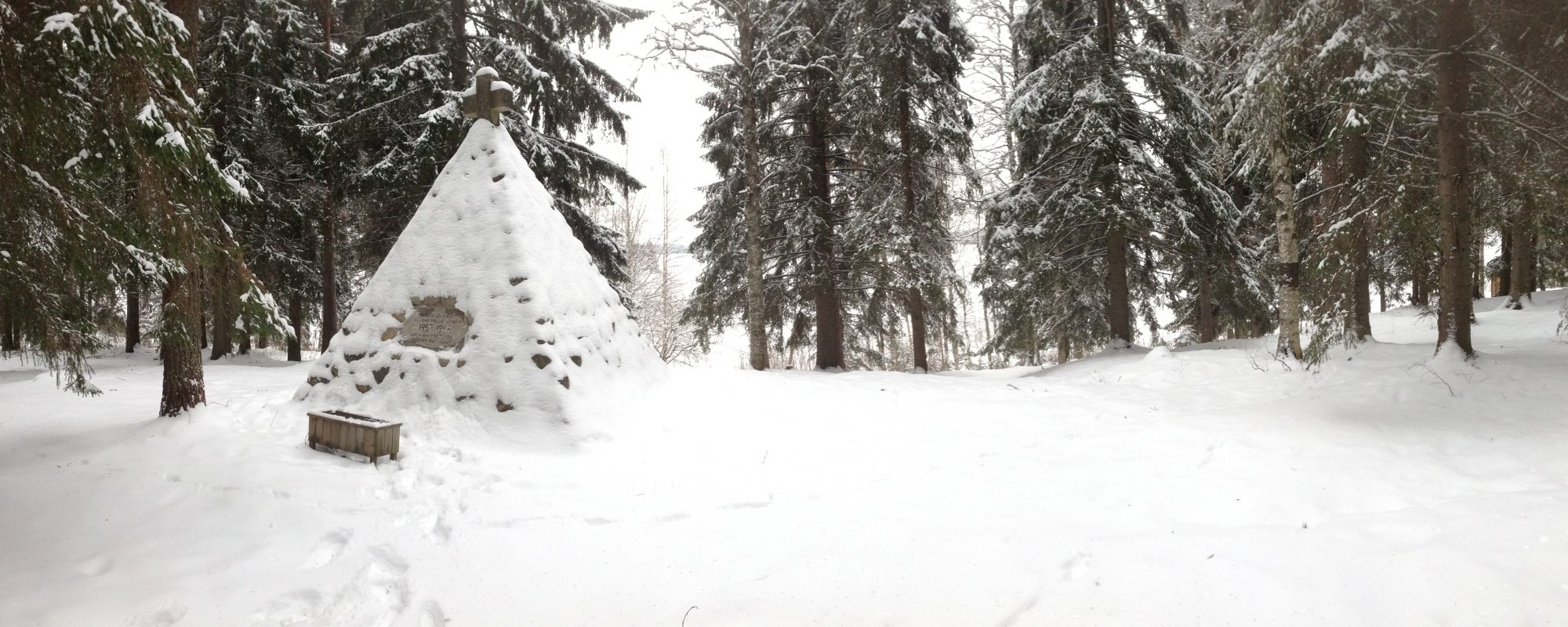In the centenary decade of the Great Famine Years (the 1960s), many new memorials were commissioned and erected – often in a more ornate style than those that had been seen earlier, and often incorporating symbolic motifs. A good example of a memorial from this period is found at the beautifully situated Heinävesi Church, in Southern Savonia. Approximately 1,500 people were buried in the mass grave here during the Great Hunger Years. This memorial was inaugurated in 1967 and designed / executed by the noted sculptor Veikko Jalava (1911-1981, who was also responsible for the “Maaemon Syli” sculpture at Nurmes a couple of years earlier). The Heinävesi memorial is a granite relief featuring a grieving figure, and an inscription recalling the local victims of the Famine Years. It is one of several memorials in the churchyard – e.g. to those who fled Karelia in the 1940s, and to the poet, Olli Kymäläinen.

As with many of the Finnish famine memorials, this might not be a monument one would stumble across by accident, but Heinävesi nevertheless lies on a southern route to Liperi and Joensuu that many people use to visit their summer cottages – it is worth a visit (and there are also beautiful views from the churchyard over Kermajärvi).
Location: Heinävesi (Kirkonmäki) Churchyard, Kirkkotie / Museokuja, Heinävesi.
Parish: Heinävesi.
Modern Region: South Savo (Etelä-Savo).
Year of Memorial: 1967.
Inscription: “In commemoration of the suffering of the inhabitants of our area during the Great Hunger Years 1866-1868. Erected by the Heinävesi Society, 1967”.
References:
Aino-Maija Turunen, “Heinää ja vettä? Heinäveden seurakunta nälkävuosina 1865-1869“, Itä-Suomen yliopisto, Filosofien tiedekunta, Pro gradu-tutkielma, 2011.
Suomen Muistomerkit. Osa 12. Vanha Mikkelin lääni (Nousiainen, 2000), p. 13





Varkaus has the same.
LikeLiked by 1 person
https://www.instagram.com/p/BWUVg-kBxft/?hl=en&taken-by=finnishfaminememorials yes, Varkaus was one of Finland’s first memorial to the 1860s. I am going to do the proper entry for it very soon (hopefully today :))
LikeLike